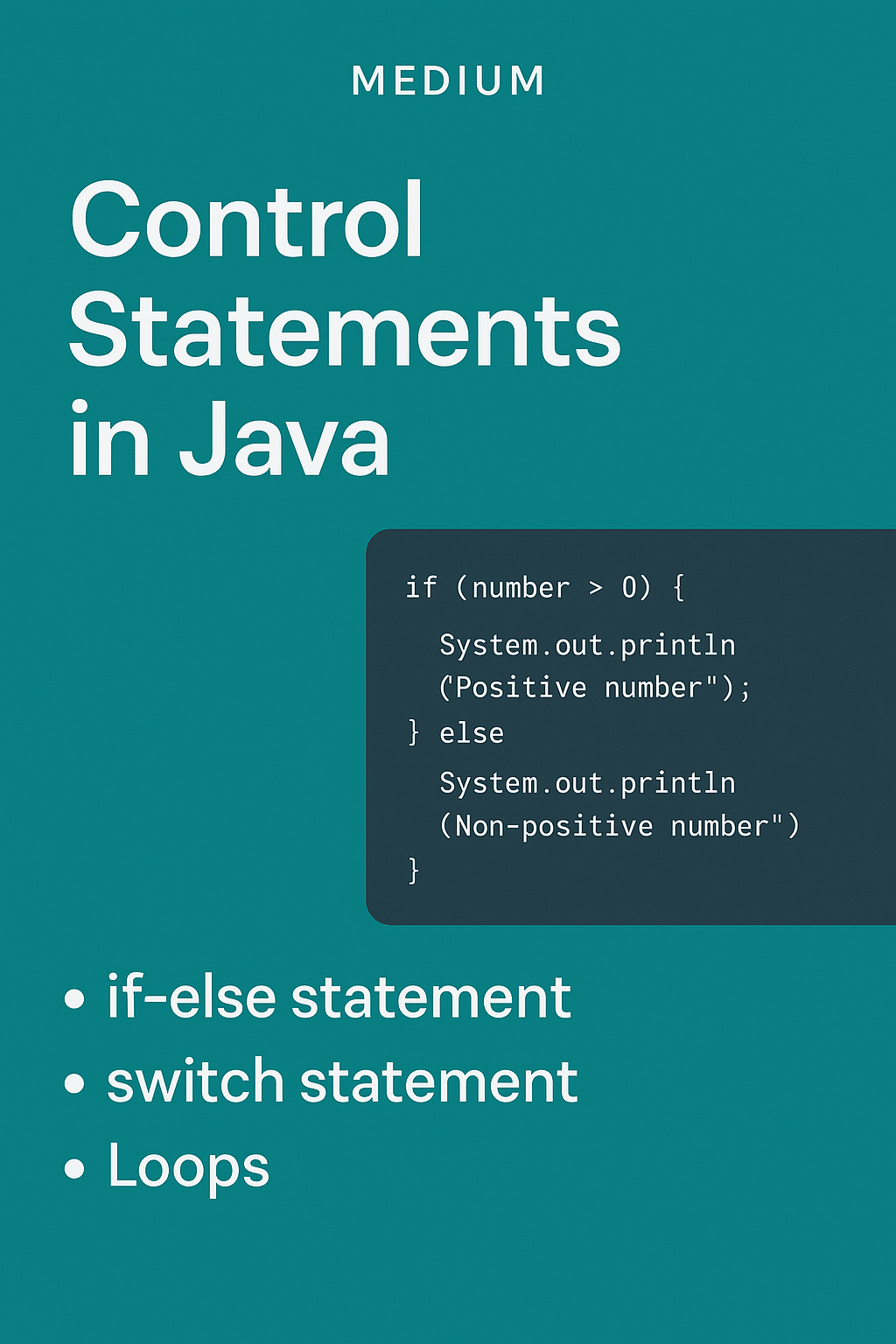Control Statements in Java: if-else, switch, and Loops Explained
Diagram of Control Statements in Java: if-else.

Control Statements in Java: if-else, switch, and Loops Explained
Control Statements in Java
Control statements allow you to control the flow of execution in a Java program. They include conditional statements like if-else and switch, as well as looping structures like for, while, and do-while.
Let’s explore how they work with examples.
1. if-else Statement
The if-else statement is used to execute code blocks based on conditions.
Syntax:
if (condition) {
// code if true
} else {
// code if false
}
Example:
int number = 10;
if (number > 0) {
System.out.println("Positive number");
} else {
System.out.println("Non-positive number");
}
2. if-else if Ladder
Used for checking multiple conditions.
Example:
int marks = 85;
if (marks >= 90) {
System.out.println("Grade A");
} else if (marks >= 75) {
System.out.println("Grade B");
} else {
System.out.println("Grade C");
}
3. switch Statement
The switch statement is an alternative to multiple if-else conditions.
Syntax:
switch (variable) {
case value1:
// code
break;
case value2:
// code
break;
default:
// default code
}
Example:
int day = 2;
switch (day) {
case 1:
System.out.println("Monday");
break;
case 2:
System.out.println("Tuesday");
break;
default:
System.out.println("Other Day");
}
🔄 4. Loops in Java
Loops execute a block of code multiple times.
A. for Loop
Used when the number of iterations is known.
for (int i = 0; i < 5; i++) {
System.out.println(i);
}
B. while Loop
Used when the condition is checked before executing the loop.
int i = 0;
while (i < 5) {
System.out.println(i);
i++;
}
C. do-while Loop
Executes the block at least once before checking the condition.
int i = 0;
do {
System.out.println(i);
i++;
} while (i < 5);
When to Use Which Statement?
Use
if-elsefor complex conditionsUse
switchfor multiple fixed valuesUse
forwhen you know how many times to loopUse
whileordo-whilewhen the number of iterations is not known in advance
Conclusion
Control statements are essential for building logic in Java programs. With if-else, switch, and loops, you can handle decision-making and repetitive tasks efficiently.
Practice these examples to gain confidence and build more dynamic Java applications.
Want to master Java? Follow us for more tutorials on syntax, OOP, error handling, and more!
Table of content
- Introduction to Java
- Java Basics
- Object-Oriented Programming (OOP) in Java
- Exception Handling in Java
- Types of Exceptions
- Try-Catch Block
- Finally Block and Throw/Throws
- Custom Exceptions
- Java Collections Framework
- Introduction to Collections
- List, Set, and Map Interfaces
- ArrayList vs LinkedList
- HashMap vs HashSet
- File Handling in Java
- Multithreading in Java
- Introduction to Threads
- Thread Lifecycle
- Creating Threads (Thread Class vs Runnable Interface)
- Synchronization and Deadlocks
- Networking in Java
- Java Networking Basics
- Socket Programming
- HTTP Requests in Java
- Java Database Connectivity (JDBC)
- Introduction to JDBC
- Connecting to MySQL Database
- Executing SQL Queries
- Using Prepared Statements
- Java Frameworks and Technologies
- Introduction to Spring Framework
- Hibernate ORM
- JavaFX for GUI Applications
- Java Interview Preparation
- Additional Java Resources
- Best Books to Learn Java
- Java Certification Guide
- Online Java Practice Platforms